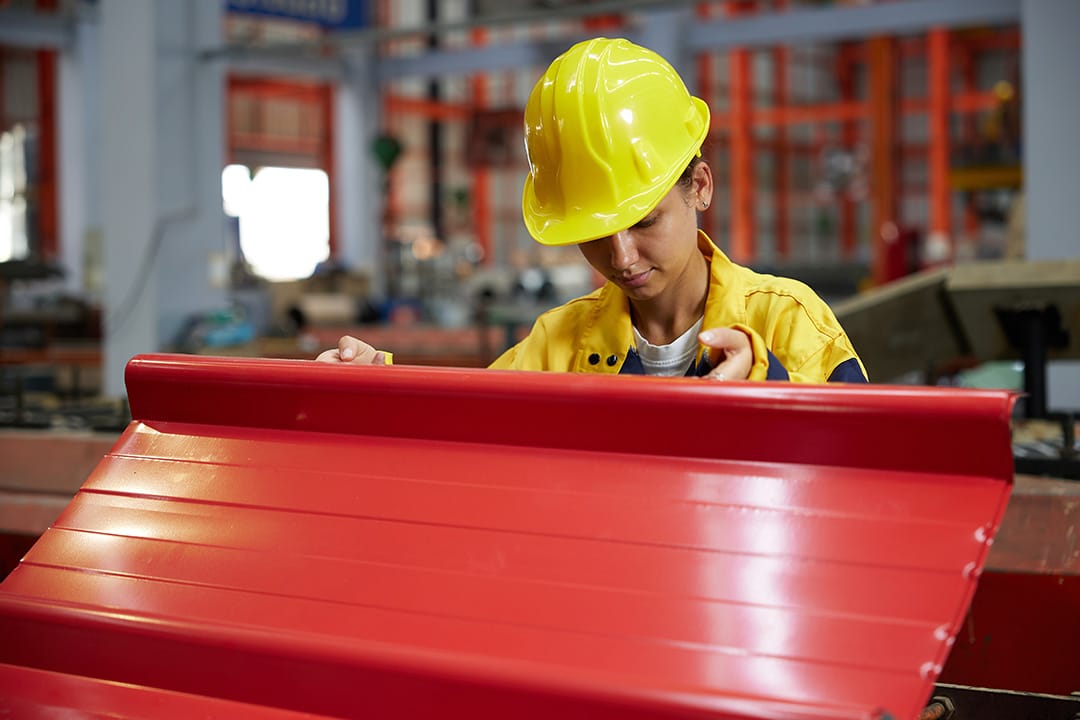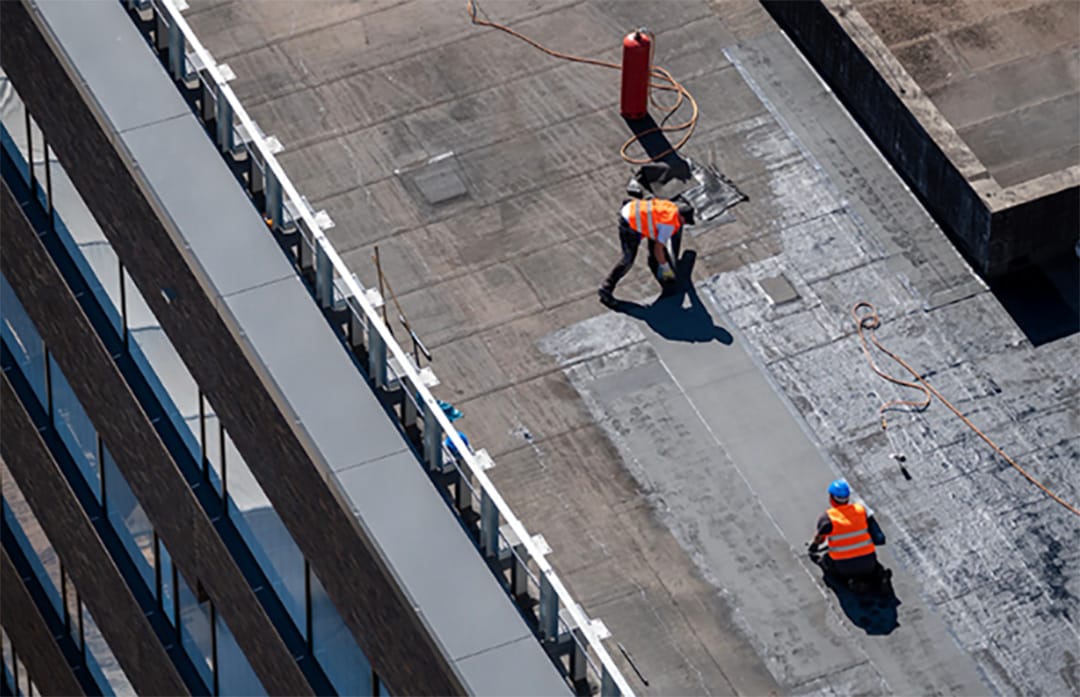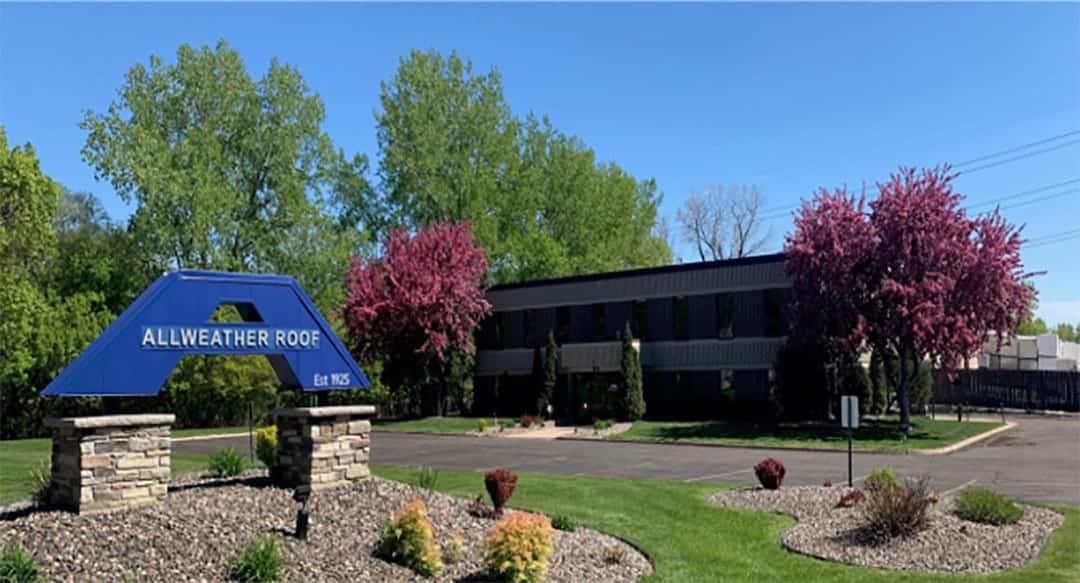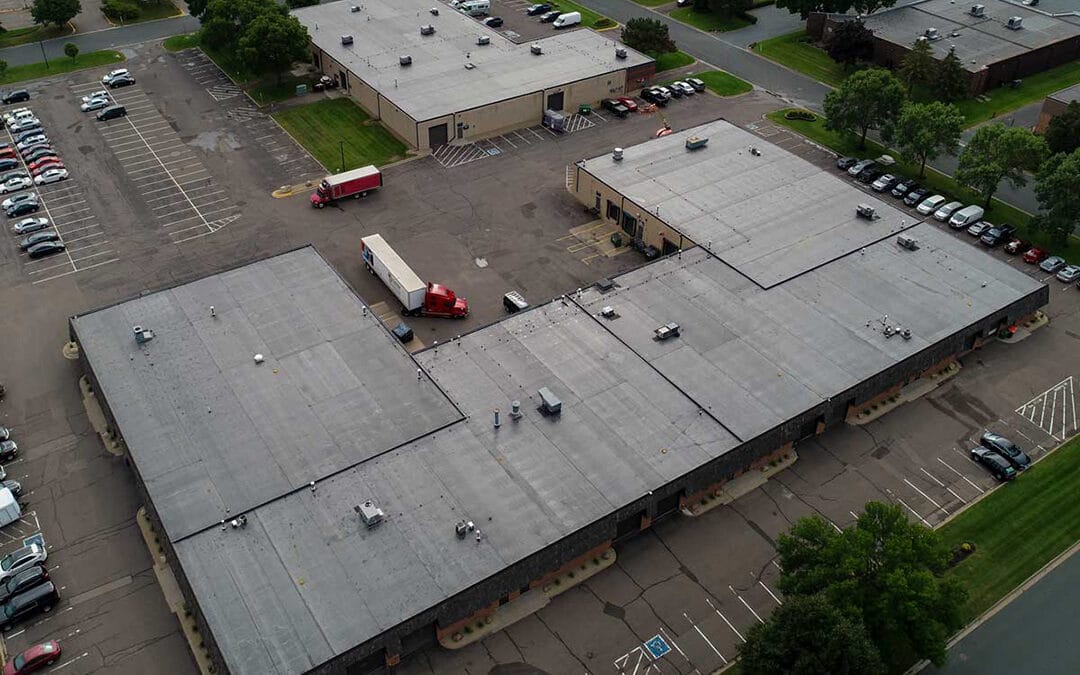The lifespan of a commercial roof can vary greatly based on several factors, including the materials used and the local climate. Generally, commercial roofs last between 15 to 40 years, depending on the type and maintenance received. Understanding the lifespan of different roof types can help us make informed decisions about when to repair or replace our roofs. At Allweather Roof, we specialize in guiding you through these considerations to ensure your commercial roof reaches its maximum potential.
In this article, we will explore the various types of commercial roofs, their expected lifespans, and what influences their durability. Regular maintenance also plays a crucial role in extending the life of our roofs, potentially saving us time and money in the long run.
Key Takeaways
- Commercial roofs typically last between 15 to 40 years.
- Maintenance and repairs can significantly extend a roof’s lifespan.
- Choosing the right roofing material is essential for longevity.
Factors Influencing Roof Longevity
Several key factors affect how long a commercial roof lasts. We need to consider material quality, installation process, climate, and roof design. Each element plays a critical role in determining the durability and lifespan of a roof. Allweather Roof can expertly manage these factors for you.
Material Quality

The type of material we choose for a commercial roof significantly impacts its lifespan. Common roofing materials include:
- Metal: Steel and aluminum roofs can last between 40 to 60 years. Copper roofs can exceed 70 years.
- Modified Bitumen: This material generally lasts 10 to 20 years.
- TPO and PVC: These thermoplastic materials usually last about 20 to 30 years.
- EPDM: Often found in low-slope roofs, EPDM lasts around 20 to 25 years.
The quality of these materials varies, so selecting high-grade products is essential. A durable roof can withstand weather changes, reducing the need for repairs and replacements.
Installation Process

The installation process is just as important as the material. Proper installation ensures that the roof performs as intended. Key aspects include:
- Following Manufacturer Guidelines: Each roofing material has specific installation requirements.
- Professional Installation: Hiring experienced contractors minimizes installation mistakes that can shorten a roof’s life.
- Inspections: Regular inspections during and after installation help identify issues early on.
Neglecting these steps can lead to leaks, poor insulation, and faster deterioration. Thus, it is crucial that we prioritize quality installation. Allweather Roof’s professional team can ensure your roof is installed correctly.
Climate and Environment

The local climate can greatly influence roof longevity. Specific factors to consider include:
- Temperature Fluctuations: Extreme heat and cold can cause materials to expand and contract, leading to wear.
- Rain and Humidity: Areas with heavy rainfall require roofs with excellent drainage systems to prevent water damage.
- Sun Exposure: UV rays can deteriorate some roofing materials faster than others.
We must choose roofing materials suited to the climate in our region. This tailored approach helps extend the life of the roof by minimizing weather-related stress.
Roof Design and Construction
The design and structure of a roof also affect its lifespan. Important design factors include:
- Slope: A well-designed slope allows proper drainage, reducing water pooling that can cause leaks.
- Ventilation: Good ventilation prevents moisture buildup in the roofing system, extending its life.
- Structural Integrity: The underlying structure must support the roof’s weight and resist environmental factors like wind.
When we consider these design elements, we can significantly enhance the durability of our roofs. Proper design and construction ensure that the roof remains functional and safe over time.
Common Types of Commercial Roofs and Their Lifespans
Different types of commercial roofs have varying lifespans and benefits. We can choose among several roofing options, depending on our needs, budget, and local climate conditions. Here are some of the most common types of commercial roofs.
Built-Up Roofing (BUR)
Built-up roofing, or BUR, consists of layers of asphalt and felt. It is commonly used on flat roofs. These layers are built up to create a strong, durable surface.
Lifespan: BUR roofs typically last between 20 to 30 years. Factors like weather and maintenance can affect their lifespan.
Maintenance Tips:
- Regular inspections for cracks or leaks
- Cleaning debris to prevent water pooling
- Applying protective coatings as needed
Metal Roofing
Metal roofing is known for its strength and longevity. We can use materials like aluminum, steel, or copper. Metal roofs are often installed on various commercial buildings.
Lifespan: Metal roofs can last around 30 to 60 years. They resist harsh weather and fire, making them a good long-term choice.
Benefits:
- Energy-efficient
- Low maintenance
- Environmentally friendly materials available
Single-Ply Membranes
Single-ply membranes are thin sheets made from synthetic materials. Common types include TPO, PVC, and EPDM. They are lightweight and easy to install.
Lifespan: These roofs have a lifespan of about 20 to 30 years. With proper care, they can last longer.
Installation Notes:
- Easy to repair and replace sections
- Simple installation process
- Reflective options help with heat management
Spray Polyurethane Foam (SPF)
Spray Polyurethane Foam is a versatile roofing system. We apply it as a liquid, which expands to form a solid roof. SPF roofs are often used for flat or low-slope buildings.
Lifespan: SPF roofs can last around 20 to 35 years with proper maintenance.
Key Advantages:
- Excellent insulation properties
- Seamless application reduces leaks
- Can be recoated for extended life
Green Roofing Systems
Green roofs incorporate vegetation into the roofing system. They provide environmental benefits and can be an attractive option for commercial buildings.
Lifespan: Green roofs usually last 30 to 50 years. Their longevity depends on the plant selection and care.
Growth Considerations:
- Require irrigation and drainage systems
- Suitable plant varieties are essential
- Regular maintenance is needed to ensure plant health
Maintenance and Repairs
Regular maintenance and timely repairs are vital for extending the lifespan of a commercial roof. By following best practices, we can avoid costly replacements and ensure our roofs remain in good condition.
Regular Inspections
We recommend conducting regular inspections at least twice a year. These inspections help identify potential issues before they escalate. During an inspection, we should check for:
- Leaks: Look for water stains or damp spots.
- Damaged shingles or tiles: Replace any missing or damaged pieces.
- Debris: Clear away leaves, branches, or other materials that could cause blockages.
Inspecting flashings, gutters, and seams is also crucial. Finding problems early can save us from expensive repairs and extend the overall life of the roof. Allweather Roof can conduct thorough inspections to keep your roof in top shape.
Timely Repairs
When we notice any signs of damage, it is essential to address them promptly. Ignoring small problems can lead to much larger issues later. Some common repairs include:
- Fixing leaks: Apply proper sealant or install new flashing as needed.
- Replacing damaged sections: This can prevent water from entering and causing rot or mold.
- Gutter cleaning: Keeping gutters clear allows water to drain properly, reducing the risk of water damage.
We should always consult with a professional for significant repairs. They can ensure the work is done correctly and safely.
Maintenance Programs
Establishing a maintenance program can provide a structured approach to roof care. We can choose to create custom schedules based on our specific roof type, age, and climate. A good program should include:
- Scheduled inspections: Regular checks based on manufacturer recommendations.
- Cleaning: Routine debris removal keeps the roof functional.
- Documentation: Keep records of inspections and repairs to monitor the roof’s health.
By following a maintenance program, we can proactively manage our roof’s condition, reducing the risk of serious damage and extending its lifespan.
Importance of Professional Assessment
Regular professional assessments are vital for maintaining the life of a commercial roof. We should schedule these evaluations at least twice a year, ideally in spring and fall.
Key Benefits of Professional Assessments:
- Early Problem Detection: Experts can spot issues before they become serious, saving us from costly repairs.
- Prolonged Roof Life: Regular assessments can extend the lifespan of the roof by addressing problems early.
- Maintenance Planning: Professionals can help us create a maintenance plan tailored to our roof’s specific needs.
During these inspections, professionals assess factors such as:
- Material condition: Different materials have different lifespans.
- Leaks and damage: Early detection prevents further issues.
- Drainage systems: Ensuring proper drainage can prevent water accumulation.
By investing in these assessments, we protect our investment and ensure safety for our buildings and occupants. Regular evaluations lead to informed decisions about repairs and replacements. This proactive approach minimizes risks associated with neglecting roof maintenance.
Frequently Asked Questions
We often receive questions about commercial roofs. Understanding these key topics can help us make informed decisions about roofing options and maintenance.
What factors affect the lifespan of a commercial roofing system?
Several factors can influence how long a commercial roof lasts. Weather conditions, installation quality, and regular maintenance are critical. Additionally, environmental factors like sun exposure, moisture, and local climate play significant roles in durability.
What are the expected maintenance requirements for extending the service life of commercial roofs?
Regular maintenance is vital for maximizing the lifespan of a commercial roof. This includes cleaning debris, checking for leaks, and ensuring proper drainage. We recommend scheduling professional inspections at least twice a year.
How does the choice of roofing material impact the durability of a commercial roof?
The roofing material significantly affects durability. Metal roofs can last over 30 years with proper care. On the other hand, materials like TPO and EPDM typically last about 15 to 25 years. Choosing the right material is essential for long-term performance.
Can regular inspections increase the longevity of a commercial roof?
Yes, regular inspections can help us catch issues early. Identifying and repairing small problems can prevent major damage and extend the roof’s life. We suggest inspecting the roof after storms or severe weather.
What are the typical replacement costs associated with different types of commercial roofs?
Replacement costs vary based on the roofing material and size of the building. For example, a metal roof may cost more upfront but can be more economical over time due to its longevity. We should prepare for varying costs based on our specific roofing choices.
What warranties are available for commercial roofing systems and what do they typically cover?
Most commercial roofing systems come with warranties that cover materials and workmanship. Length and coverage can differ by manufacturer and material type. It is essential to review the warranty details to know what is protected.



Trackbacks/Pingbacks